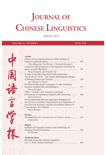
JOURNAL OF CHINESE LINGUISTICS
Scope & Guideline
Cultivating Knowledge in the Realm of Chinese Linguistics
Introduction
Aims and Scopes
- Syntactic and Morphological Analysis:
The journal emphasizes the exploration of syntactic structures and morphological phenomena in Chinese and its dialects, analyzing how these elements interact within the language. - Phonetic and Phonological Studies:
Research focusing on the sound systems of Chinese languages, including tonal variations, phonation types, and their implications for linguistic theory. - Historical Linguistics and Language Change:
A core area of focus is the diachronic analysis of Chinese, investigating changes in syntax, morphology, and phonetics over time. - Dialectology and Variation:
The journal covers studies on regional dialects, their characteristics, and their relationships to Standard Mandarin, contributing to the understanding of linguistic diversity within Chinese. - Cross-linguistic and Comparative Studies:
Research that places Chinese in a broader linguistic context, comparing it with other languages and examining universal linguistic principles. - Cognitive and Psycholinguistic Approaches:
Exploration of the cognitive processes involved in language comprehension and production, particularly in relation to the Chinese language.
Trending and Emerging
- Empirical and Experimental Approaches:
There is a marked increase in studies utilizing empirical methods, including experimental designs and statistical modeling to analyze language phenomena. - Interdisciplinary Research:
Emerging themes illustrate a blending of linguistics with cognitive science, psychology, and even neuroscience, as researchers seek to understand language processing in more holistic terms. - Focus on Tonal and Phonetic Variation:
Recent publications show an increased interest in tonal languages, particularly the phonetic realization of tones and their implications for linguistic theory. - Sociolinguistic Perspectives:
Emerging studies are increasingly examining the sociolinguistic dimensions of language use, including issues of language attrition, bilingualism, and identity among Chinese speakers. - Grammaticalization and Language Change:
Research on grammaticalization processes within Chinese languages is gaining traction, highlighting how new grammatical structures emerge and evolve over time.
Declining or Waning
- Traditional Grammar Frameworks:
Research employing classical grammar frameworks has decreased, possibly due to a shift towards more dynamic and cognitive approaches to understanding language. - Historical Textual Analysis:
While still relevant, studies focused solely on historical texts without broader linguistic implications appear less frequently, indicating a move towards more integrative approaches. - Comparative Analysis with Non-Sinitic Languages:
There has been a notable reduction in comparative studies specifically contrasting Chinese with non-Sinitic languages, suggesting a more inward focus on Chinese linguistic phenomena.
Similar Journals

Linguistics of the Tibeto-Burman Area
Illuminating Language Structures of the Tibeto-Burman RegionLinguistics of the Tibeto-Burman Area is a premier journal dedicated to the study and exploration of the Tibeto-Burman languages, offering a significant platform for researchers, scholars, and practitioners in the field of linguistics. Published by John Benjamins Publishing Co, this journal not only maintains rigorous scholarly standards but also aims to contribute to the understanding of language diversity and evolution within the Tibeto-Burman region. With an impressive Q2 ranking in linguistics and language, it ranks in the 49th percentile within Arts and Humanities and the 45th percentile in Social Sciences, highlighting its relevance and quality in the academic community. Since its inception in 2011, the journal has been at the forefront of disseminating research that encourages interdisciplinary dialogue and fosters insights into language structure, use, and cultural implications. Though not an open access publication, it remains accessible to institutions and individuals alike, ensuring that vital academic discussions continue. The ISSN for print is 0731-3500 and for the electronic version, 2214-5907, facilitating the work of the growing scholarly community engaged in Tibeto-Burman linguistics.

Studia z Filologii Polskiej i Slowianskiej
Illuminating the Nuances of Slavic LanguagesStudia z Filologii Polskiej i Slowianskiej is a prominent journal published by the Polish Academy of Sciences, Institute of Slavic Studies, focusing on the rich and diverse field of linguistics and language studies, particularly within the Slavic context. With the ISSN 0081-7090 and E-ISSN 2392-2435, this open-access journal has been a valuable resource for researchers, professionals, and students since its transition to an open-access model in 2014. It features rigorous peer-reviewed articles that contribute to the understanding of linguistic phenomena and cultural narratives across Slavic languages. Recognized within the Q3 quartile of linguistics and language in 2023, it ranks at the intersection of arts, humanities, and social sciences, providing insights that echo through disciplines such as sociolinguistics, psycholinguistics, and philology. In its ongoing publication trajectory from 2011 to 2023, Studia z Filologii Polskiej i Slowianskiej continues to foster academic discourse and collaboration, positioning itself as a key player in the global linguistic community.

LINGUISTIQUE
Nurturing a Community of Language ScholarsLINGUISTIQUE, an esteemed journal published by PRESSES UNIV FRANCE, serves as a vital platform for scholarly discourse in the fields of linguistics and language studies. With its ISSN 0075-966X and E-ISSN 2101-0234, this French journal has been a significant contributor to the understanding of linguistic phenomena since its inception in 2004, and it continues its journey through to 2024. Although currently categorized in the Q4 quartile for both Arts and Humanities (miscellaneous) and Linguistics and Language, its commitment to publishing quality research encourages a diverse range of articles, reviews, and innovative studies. Positioned in the 32nd and 29th percentiles for its respective fields according to Scopus rankings, LINGUISTIQUE is dedicated to advancing knowledge and stimulating engagement among researchers, professionals, and students alike. While it does not offer open access, the journal remains an essential resource for those who seek to deepen their understanding of linguistic principles in a global context, facilitating a richer discourse that connects theory with practice.

Jezikoslovlje
Unveiling the Dynamics of Language and SocietyJezikoslovlje, published by the Josip Juraj Strossmayer University, Faculty of Philosophy in Croatia, is an essential publication in the field of Linguistics and Language Studies. Launched in 2008 and extending its contributions to the academic community through 2024, this journal addresses a spectrum of linguistic research, facilitating scholarly dialogue around both theoretical and applied aspects of language. With a current Scopus ranking placing it in the 54th percentile in the Arts and Humanities and the 50th percentile in Social Sciences, Jezikoslovlje serves as a vital resource for researchers and students looking to engage with contemporary linguistic issues. Although it operates under a traditional access model, its indexed presence and rigorous peer-review process ensure that published works maintain a high scholarly standard, inviting contributions that advance understanding in this dynamic discipline. The journal's commitment to fostering knowledge in linguistics makes it a significant platform for academics in Croatia and beyond.

International Journal of Chinese Linguistics
Exploring the Depths of Chinese LinguisticsInternational Journal of Chinese Linguistics is a distinguished publication that delves into various aspects of linguistic studies pertaining to the Chinese language. Published by John Benjamins Publishing Co, this journal stands out for its commitment to advancing the knowledge and understanding of Chinese linguistics within the global academic community. With an impact factor that places it in the Q2 quartile of linguistics and language, the journal is indexed in prominent databases, achieving ranks of #501 in Arts and Humanities and #580 in Social Sciences. These rankings reflect the journal's dedication to maintaining high scholarly standards and its relevance in both linguistic research and practical applications. While not categorized as Open Access, the journal provides necessary access through institutional subscriptions, thereby ensuring that valuable research reaches a broad audience. Covering a wide range of topics from syntax and phonetics to sociolinguistics and applied linguistics, the International Journal of Chinese Linguistics serves as an essential resource for researchers, professionals, and students seeking to deepen their understanding of the intricate relationship between language and culture in the Chinese context. With converging years from 2019 to 2024, it continues to evolve, reflecting ongoing developments in the field.
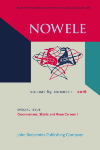
NOWELE-North-Western European Language Evolution
Illuminating the Paths of Language DevelopmentNOWELE-North-Western European Language Evolution, published by John Benjamins Publishing Co, serves as a vital platform for researchers and scholars interested in the evolution and dynamics of North-Western European languages. With an ISSN of 0108-8416 and an E-ISSN of 2212-9715, this journal has been contributing to the field of linguistics since its inception in 1983, with ongoing publications until 2024. Indexed in Scopus and classified in the Q3 category for Linguistics and Language, NOWELE is recognized for its rigorous academic standards and diverse contributions, ranking #485 out of 1088 in the Arts and Humanities category, and #566 out of 1167 in Social Sciences. The journal fosters an open dialogue within the linguistic community, presenting innovative research findings and theoretical advancements. Researchers, professionals, and students alike benefit from its systematic exploration of language evolution in the context of a rapidly changing global linguistic landscape.

Yuyan Kexue-Linguistic Sciences
Illuminating Language Through Interdisciplinary InsightsYuyan Kexue-Linguistic Sciences, published by SCIENCE PRESS, is a pivotal academic journal dedicated to the field of linguistics. With its ISSN of 1671-9484, this journal seeks to explore and illuminate various linguistic phenomena, contributing significantly to the understanding of language in both theoretical and applied contexts. Emphasizing interdisciplinary research, it welcomes contributions that bridge linguistics with areas such as cognitive science, sociology, and communication studies. Although it currently does not offer open access, Yuyan Kexue-Linguistic Sciences aims to provide a platform for researchers, professionals, and students alike to engage with cutting-edge studies and emerging trends in linguistics. Its publication location in Beijing positions it as a vital contributor to the global discourse in the linguistic sciences, catering to both a national and international audience. As the journal continues to grow, it aspires to maintain high academic standards and foster scholarly exchange for years to come.
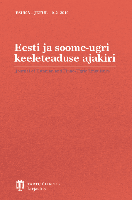
Eesti ja Soome-Ugri Keeleteaduse Ajakiri-Journal of Estonian and Finno-Ugric Linguistics
Advancing the Understanding of Finno-Ugric LinguisticsEesti ja Soome-Ugri Keeleteaduse Ajakiri - Journal of Estonian and Finno-Ugric Linguistics is a premier academic journal published by UNIV TARTU PRESS, dedicated to advancing the field of linguistics with a particular focus on the Estonian and Finno-Ugric languages. Since its inception, the journal has embraced an Open Access publishing model, allowing researchers and enthusiasts to freely explore its groundbreaking studies and findings since 2013. With an Impact Factor that places it in the Q3 quartile of leading journals within the linguistic domain, it serves as a vital platform for the dissemination of new research and theoretical advancements. Ranked 410th out of 1088 journals in the Arts and Humanities category for Language and Linguistics, it reflects a robust commitment to quality scholarship that appeals to academics, professionals, and students alike. Operating from Tartu, Estonia, the journal aims to foster greater understanding and appreciation of the Estonian language within the broader context of Finno-Ugric studies, making it an essential resource for anyone interested in these unique linguistic cultures.
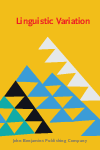
Linguistic Variation
Advancing Linguistic Insights for a Global AudienceLinguistic Variation is a prestigious academic journal dedicated to advancing the field of linguistics and language studies. Published by John Benjamins Publishing Co, this journal provides a comprehensive platform for researchers, educators, and students to explore the rich diversity of linguistic practices and theories. With an ISSN of 2211-6834 and an E-ISSN of 2211-6842, it spans a crucial timeline from 2017 to 2024. Renowned for its rigorous peer-review process, Linguistic Variation holds Q2 status in Linguistics and Language and Q3 in Food Science within the 2023 category quartiles, reflecting its significant role in interdisciplinary research. The journal ranks #412 out of 1088 in Arts and Humanities and #489 out of 1167 in Social Sciences according to Scopus, indicating its growing influence and esteem in the academic community. Researchers will appreciate its focus on empirical studies and theoretical advancements while benefiting from a wide array of access options that cater to varied readership needs. As a vital resource in linguistics, it aims to foster critical dialogue and innovation within the discipline.
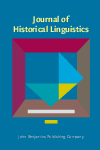
Journal of Historical Linguistics
Charting the Course of Language DevelopmentJournal of Historical Linguistics, published by JOHN BENJAMINS PUBLISHING CO, is an esteemed peer-reviewed journal that has carved a niche in the intricate field of linguistics and language. With its ISSN 2210-2116 and E-ISSN 2210-2124, the journal has made significant contributions since its inception in 2011, continuing its impactful discourse until 2024. Located in the Netherlands, the journal showcases a commitment to advancing our understanding of language evolution, change, and historical linguistics, providing invaluable insights for researchers, professionals, and students alike. As demonstrated by its commendable rankings—placing it in the Q3 quartile for linguistics and language with a Scopus rank of #275 out of 1088—this journal stands as a critical resource for those invested in the empirical and theoretical aspects of language history. Its accessibility enhances its reach, allowing for a wider distribution of knowledge in this vital scholarly area.